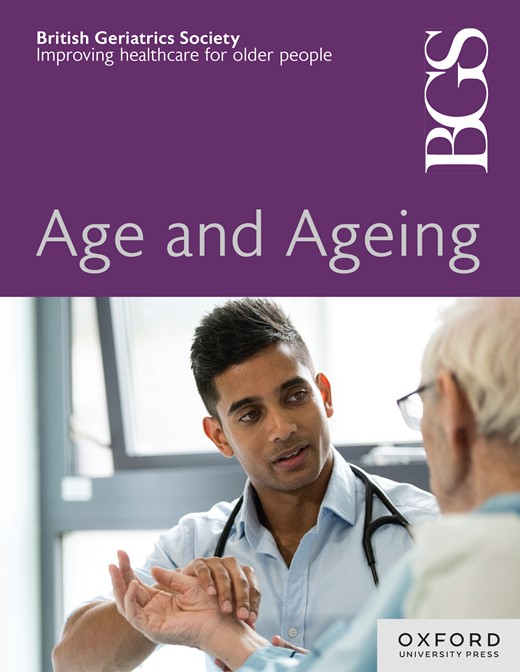一项针对TENA智能护理改变指标对养老院失禁护理效率和皮肤健康影响的上市后集群随机对照试验
IF 7.1
2区 医学
Q1 GERIATRICS & GERONTOLOGY
引用次数: 0
摘要
背景尿失禁(UI)在养老院的老年居民中非常普遍。对许多人来说,管理包括使用由检查和更改方案维护的适当产品(垫);这通常管理不善。数字健康技术设备,如尿饱和度传感器,可能有助于确保及时更换尿垫。本研究考察了TENA智能护理改变指标(Change Indicator)装置在患有尿失尿症的养老院居民中使用的有效性和安全性。方法采用聚类随机对照试验,比较老年护理患者使用器械的情况。共同主要结局是复合护理效率评分和皮肤健康的改变。第二住院医师和护理人员的结果也进行了比较。结果共招募14个站点,其中9个站点进行常规检查和换药方案。纳入的单位包括108名居民,53名干预组,49名常规护理组和83名护理人员(31名常规护理,52名干预)。居民年龄中位数为87岁(59 ~ 101岁);21.5%为男性。干预组护理效率提高30分钟/天,常规护理组护理效率提高16分钟/天(P > 0.05)。皮肤健康没有变化。在睡眠质量上有统计学上的显著改善,使用垫子的24小时吸收能力也有显著改善,这有利于设备的使用。报告了一个与设备相关的伤害。这项旨在改善养老院老年居民的失禁护理的设备的比较试验导致每天在失禁护理上花费的时间减少了30分钟,或减少了31%。鉴于该研究未能证明其主要结果,因此很难评估器械使用的临床相关性。减少睡眠垫的使用和睡眠中断的数量是有价值的结果。有必要进行长期的实施和疗效研究。本文章由计算机程序翻译,如有差异,请以英文原文为准。
A post-market, cluster randomised controlled trial of the effect of the TENA SmartCare Change Indicator on continence care efficiency and skin health in nursing homes
Background Urinary Incontinence (UI) is highly prevalent in older residents of nursing homes. For many, management consists of using appropriate products (pads) maintained by a check and change regimen; this is often poorly managed. Digital health technology devices, like urine saturation sensors, may aid ensure timely change of pads. This study examined the efficacy and safety of the use of the TENA SmartCare Change Indicator (Change Indicator) device for nursing home residents with UI. Methods Cluster randomised controlled trial of device use in older nursing home residents with UI, compared to usual care. Co-primary outcomes were a compound care efficiency score and change in skin health. Secondary resident and caregiver outcomes were also compared. Results Fourteen sites were recruited, nine of which operated routine check and change regimens. Included units comprised 108 residents, 53 in the intervention group and 49 in the usual care group and 83 caregivers (31 usual care, 52 intervention). The median age of residents was 87 (range 59–101) years; 21.5% were male. Care efficiency was improved by 30 min/day in the intervention group and 16 min/day in the usual care group (P > .05). There was no change in skin health. There were statistically significant improvements in sleep quality and a total of 24 hour absorbency of pads used, favouring device use. One device related harm was reported. Discussion This comparative trial of a device designed to improve the delivery of continence care to older residents of nursing homes resulted in reductions in time spent in continence care by 30 min/day, or a 31% reduction. Given that the study failed to demonstrate its primary outcome, it is difficult to assess the clinical relevance of device use. The reduction in pad use and in number of sleep interruptions are valuable outcomes. A longer-term implementation and efficacy study is warranted.
求助全文
通过发布文献求助,成功后即可免费获取论文全文。
去求助
来源期刊

Age and ageing
医学-老年医学
CiteScore
9.20
自引率
6.00%
发文量
796
审稿时长
4-8 weeks
期刊介绍:
Age and Ageing is an international journal publishing refereed original articles and commissioned reviews on geriatric medicine and gerontology. Its range includes research on ageing and clinical, epidemiological, and psychological aspects of later life.
 求助内容:
求助内容: 应助结果提醒方式:
应助结果提醒方式:


